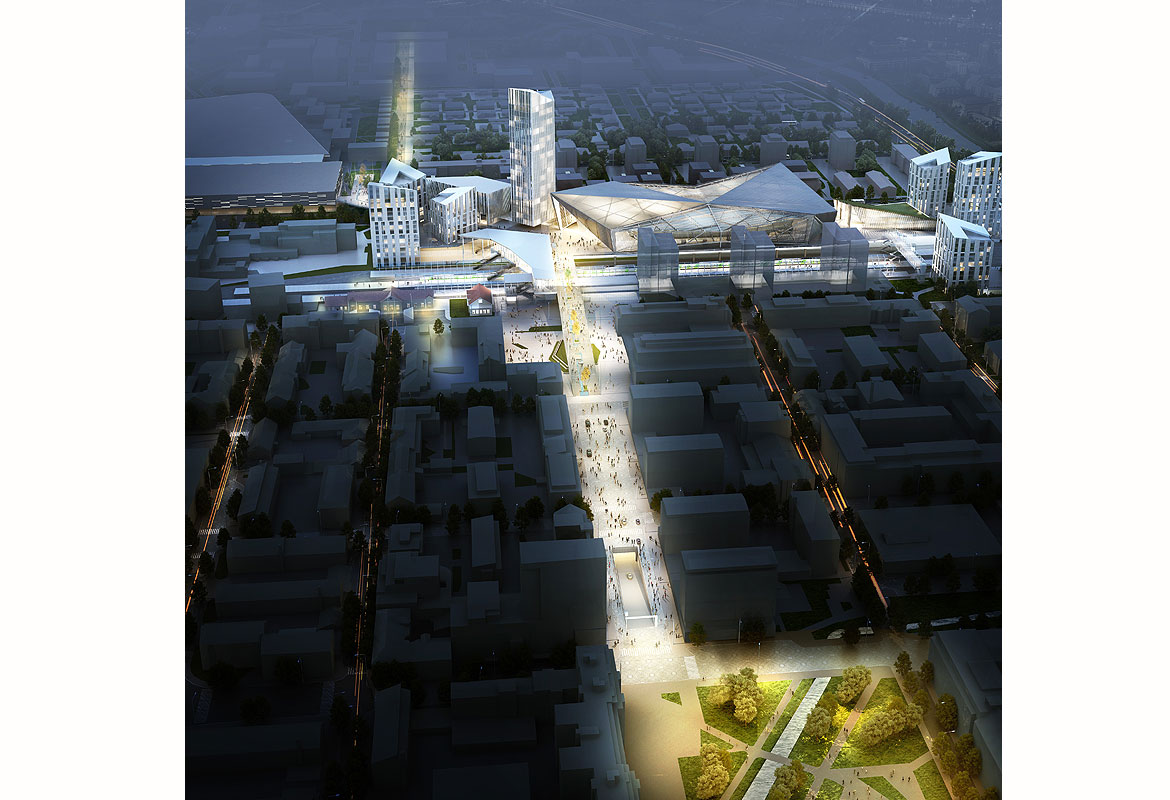
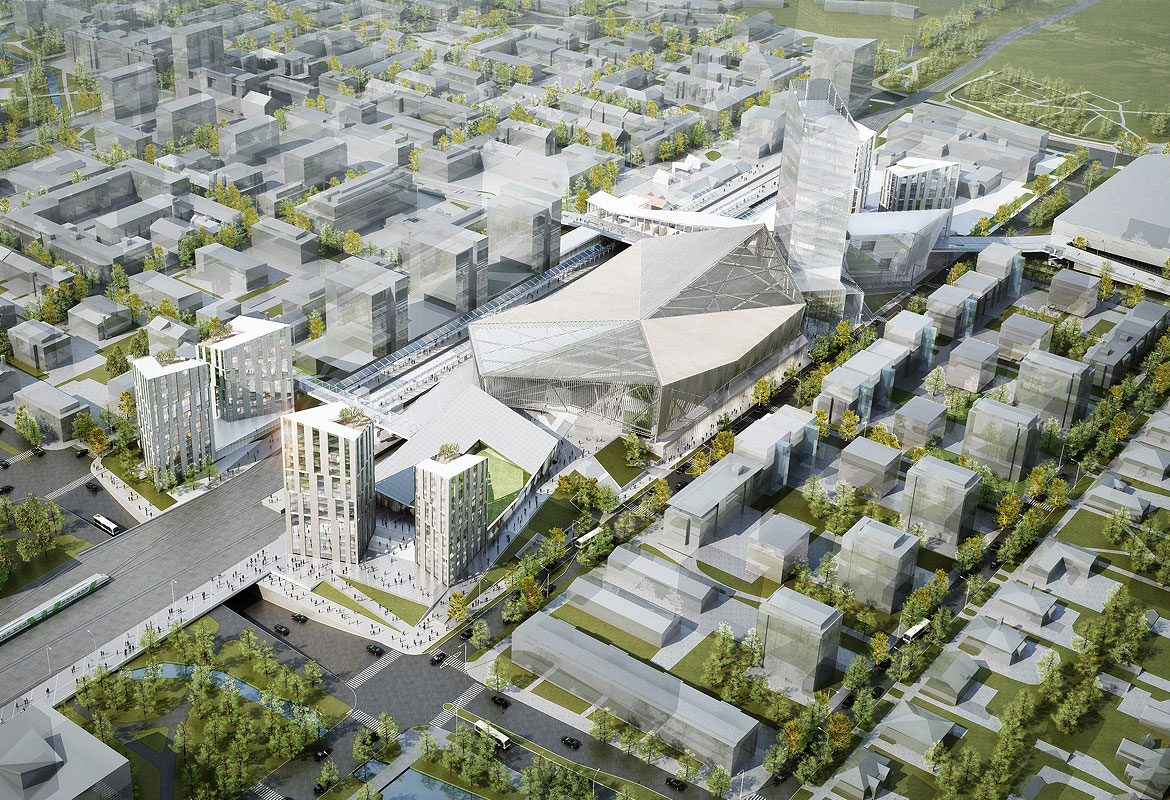
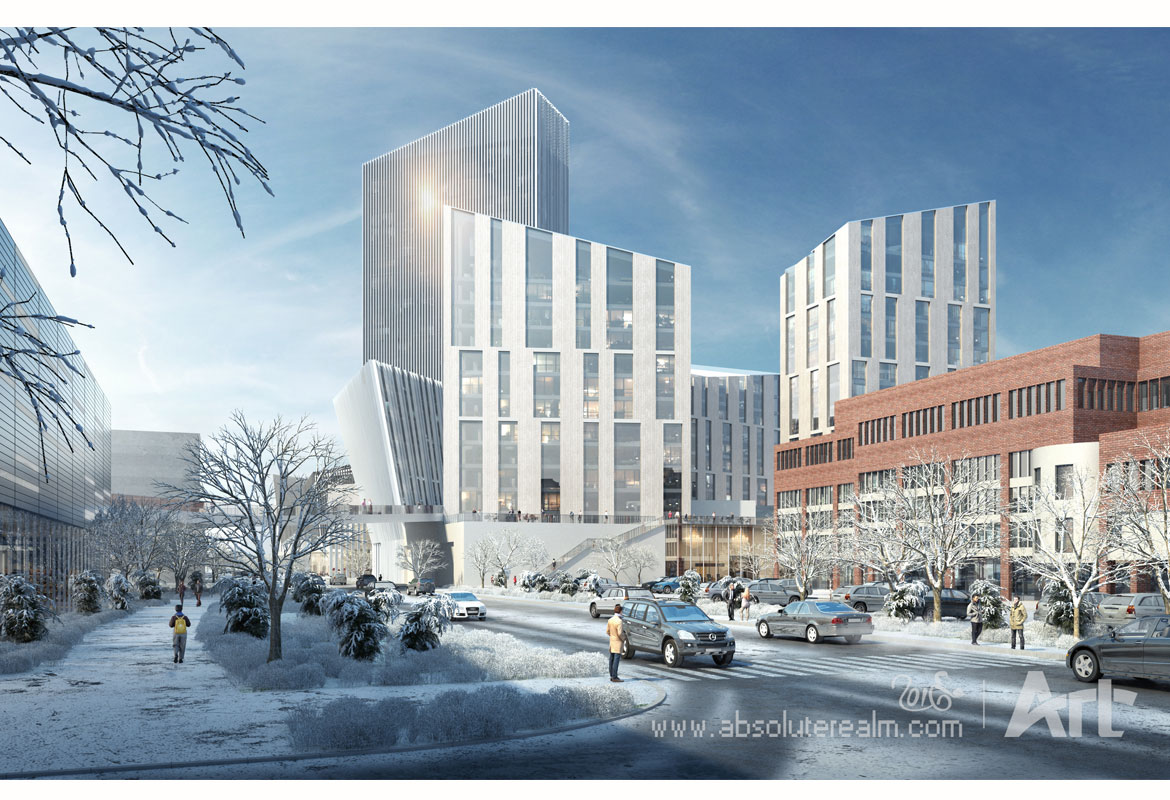
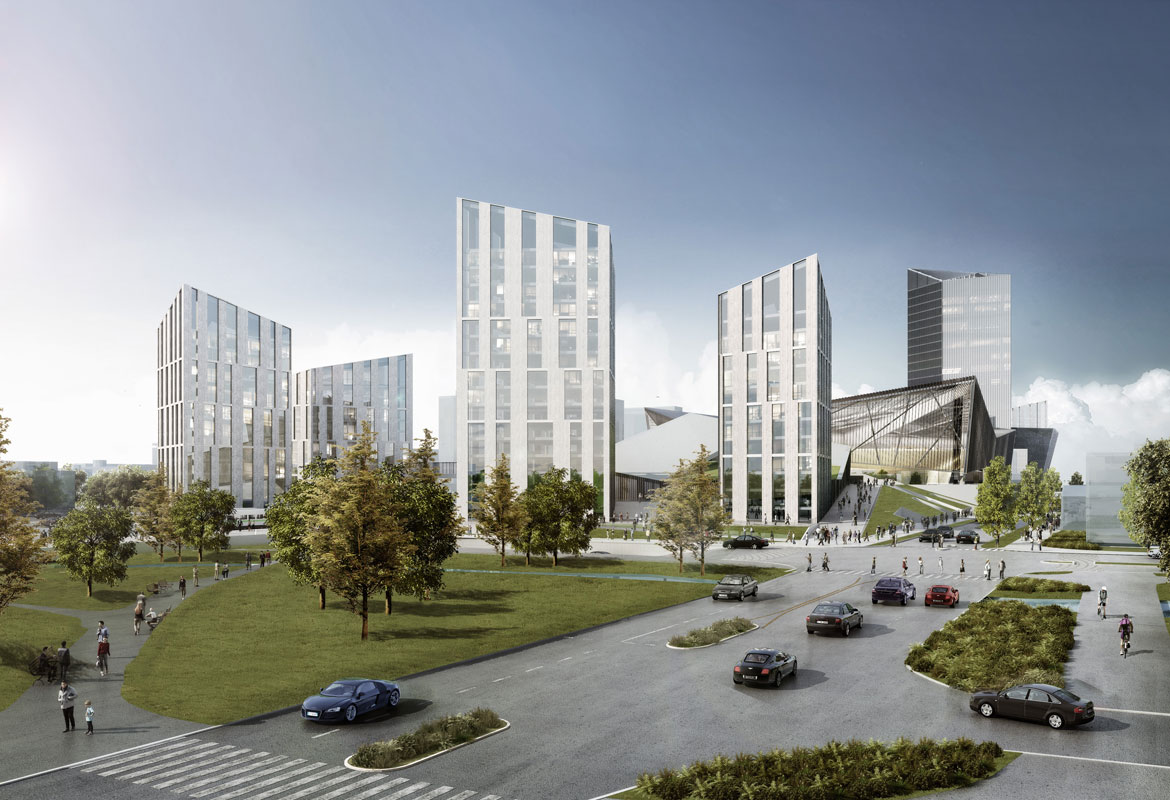

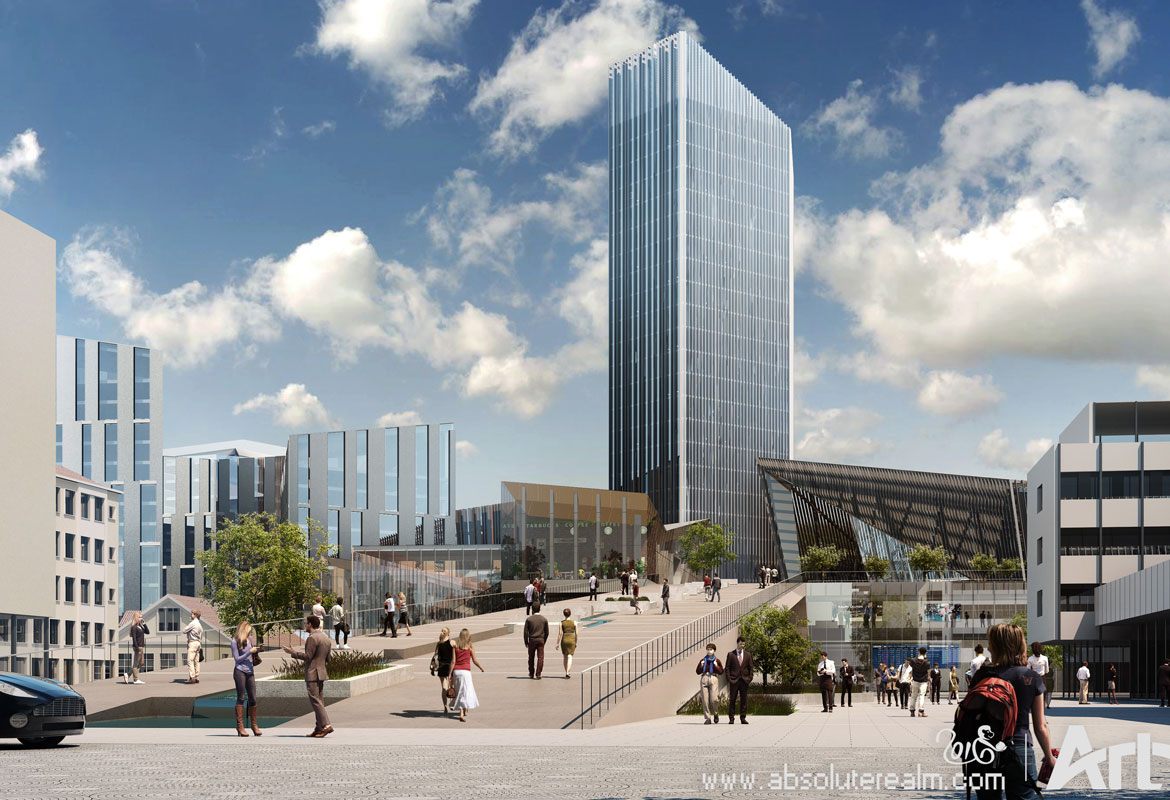

OULU TRANSPORTATION CENTER
Oulu, Finland 2016
Competition proposalTotal gross area: 165 000 sqm.
Basic Project Functions:
Train and bus stations
Multi-purpose arena 30 000 sqm
Multi-purpose hall 10 000 sqm
Hotel 10 000 sqm
Offices 7 000 sqm
Apartments 50 000 sqm
Commercial spaces 20 000 sqm
Parking decks 38 000 sqm
The aim of the competition was to create a new transportation hub for the existing main train and bus stations and to reduce the impact of the separating cut in the urban structure now inflicted by the railway.
The design reconnects the two sides of the city by creating new attractions and activities along the seam zone. Instead of adding mere functional connecting routes, a new focal point of city structure is created around the new transportation hub that breaches over and across the train platforms. A new multi-functional arena is added to the original program, a factor that would increase the range of services for the whole city, but also create an enormous increase of activities and people to support the new hotel and commercial services that are desired in the area, as well as create the vibrancy needed to create a true extension of the city center.
The raised deck areas are connected to the city infrastructure by gradually rising levels or street-like bridges. New urban spaces, plazas, squares and parks are created where the new construction meets key points of the existing city structure. The deck and its edges create a platform for a new urban park entity that features trees and other plants from the local northern landscape.
Apartment buildings are organised in three semi-open blocks and built at the ends of the long deck level that flanks the railway zone. Parking is arranged underneath. The buildings are proposed to be constructed from wood which would also be used in the large multi-purpose arena and the smaller multi-purpose “club” building, an additional venue connected to the arena. The landmark hotel tower of metal and glass would create a contrasting pair to the wooden buildings, a setting that also symbolizes the history of the Oulu region. In earlier centuries, pine and tar were the source of prosperity and growth, and in the last few decades Oulu has developed into an internationally known hub of high tech research and design.
| BACK |
